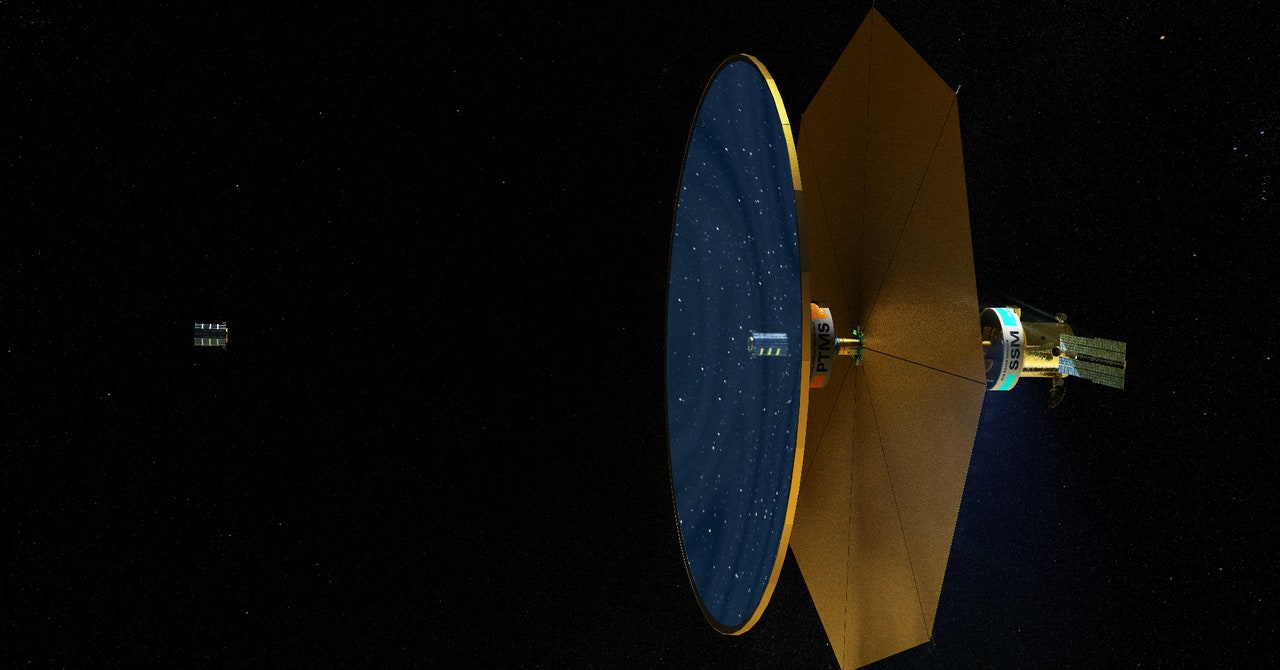
Instead, with his “fluidic telescope” concept, one need only launch a frame structure—such as an umbrella-shaped satellite dish—and a tank of mirror liquid, like gallium alloys and ionic liquids. After launch, the liquid would be injected into the frame. In space, droplets stick together because of surface tension, and the pesky force of Earth’s gravity doesn’t get in the way and distort their shape. This will result in an incredibly smooth mirror without the need for mechanical processes like grinding and polishing, which are used for traditional glass mirrors. It would then be attached to the telescope’s other components through an automated process.
Using tests on a plane and on the International Space Station, his team has already learned how to make lenses with liquid polymers, and they determined that the volume of the liquid sets the degree of magnification. With the NIAC funding, they’ll prepare for the next step: conducting a test of a small liquid mirror in space later this decade. Their goal is to eventually design a 50-meter mirror, but since this technology is scalable, Balaban says one could use the same physical principles to engineer a mirror kilometers wide. JWST’s large mirror makes it one of the most sensitive telescopes ever built, but, he argues, to keep making advances, it may be necessary to build bigger mirrors with this new method.
Zachary Cordero, an MIT astronautics researcher, leads another new project to develop an in-space manufacturing technique called bend-forming. It involves bending a single strand of wire at specific nodes and angles, then adding joints to make a stiff structure. Cordero and his team are working on a particular application: designing a reflector for a satellite in high orbit, which could monitor storms and precipitation by measuring moisture changes in the atmosphere.
As with several of the other winners, his proposal takes on the challenge of building really big things in space, despite the size and weight constraints of rocket travel. “With conventional reflectors, the bigger you make these things, the worse the surface precision, and eventually they’re basically unusable. People have been talking about ways to make 100-meter or kilometer-scale reflectors in space for decades,” he says. With their process, one could launch enough material for a 100-meter dish on a single rocket, he says.
Among the other 14 winners: a proposal to deploy a seaplane to fly on Titan, Saturn’s biggest moon, and one for a heated probe to penetrate the ocean of its neighbor, Enceladus, which is enclosed by a thick outer layer of ice that behaves like rock, thanks to the below-freezing temperatures.
While some of these projects won’t succeed, the program helps NASA test the bounds of what’s feasible, LaPointe says: “If a project fails, it’s still useful to us. If it works, it could transform future NASA missions.”


